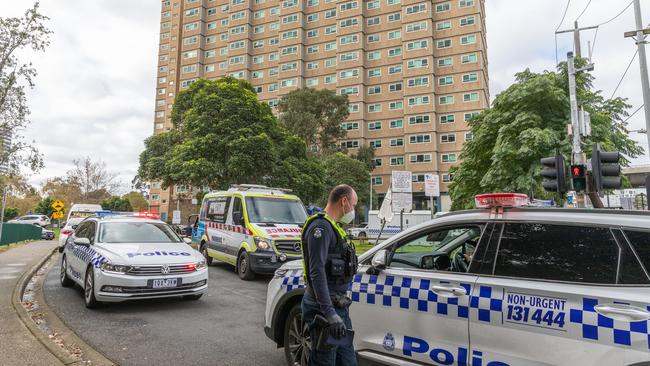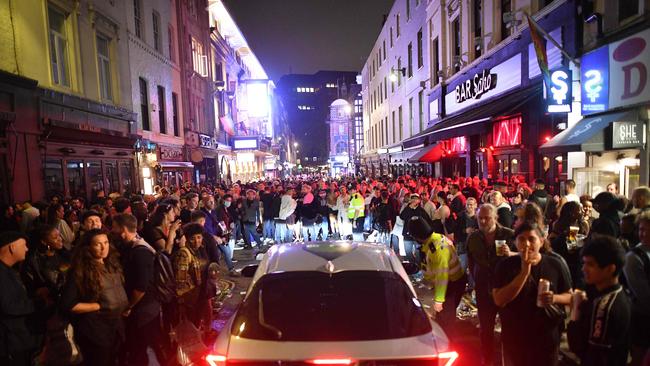Coronavirus: Sorry tale of a Covid catastrophe

The World Health Organisation is the United Nations agency primarily responsible for international public health, yet its record is disturbing. It is accused of medical malpractice for knowingly promoting useless malaria drugs which led to the deaths of hundreds of thousands of African children. Along with the US Centres for Disease Control and Prevention, it covered up UN culpability in a Haitian cholera epidemic, responsible for more than 10,000 deaths.
And despite Zimbabwe’s life expectancy plummeting from 61 to 44 in less than two decades, it appointed Zimbabwean despot Robert Mugabe a “goodwill ambassador”.
This unprincipled mindset seems to have permeated medical research. In an article, The Truth Wears Off: Is There Something Wrong With The Scientific Method?, The New Yorker warns that “all sorts of well-established, multiply confirmed scientific findings have started to look uncertain”.
Biologist Richard Palmer from the University of Alberta believes scientists selectively report data, disregarding what they don’t want to see. “Our beliefs are a sort of blindness,” he says.
Stanford University epidemiology professor John Ionnidis expresses “increasing concern that most current published research findings are false”. In an article in the Journal of the American Medical Association, he looked at the 49 most-cited clinical research studies in three major medical journals and discovered that of 34 replicated claims, 41 per cent had effectively been falsified.
READ MORE: Live: Coronavirus blog | Covid spike hits economy | ‘Bubble’ to provide $3.6bn boost | Victoria is losing the fight
The Wall Street Journal cites a dramatic upward trend in retraction notices, including for fraud. The latest high-profile withdrawal is a hydroxychloroquine study in The Lancet. HCQ has become highly politicised since President Donald Trump used it as a COVID-19 prophylactic. Indeed, despite many doctors claiming significant success with early onset coronavirus patients, the FDA has banned its use in the US.
Does politicisation of medicine explain why, despite the 2002 SARS experience, preparation for COVID-19 was so derisory? Was the pandemic declaration delayed until March for political reasons? According to the South China Morning Post, Chinese authorities knew of multiple coronavirus cases in early November. They officially advised the WHO on December 31. A month later, an international health emergency was announced.

That interval gave Beijing sufficient time to complete new hospitals, stock up on medical equipment and prepare a propaganda offensive. Even then, the emergency declaration was accompanied by a disarming advisory that: “Based on the facts on the ground, containment is possible.”
Taiwan is not a WHO member. It dismissed the official line as disinformation and rapidly implemented its own plans. In January, when Beijing imposed a lockdown in Wuhan, Taipei closed its borders to mainland Chinese arrivals. With a similar population to ours, it has recorded seven deaths.
Similar border closures quickly followed in Australia, Singapore and the US, earning a WHO rebuke for breeding “fear and stigma”, and causing “more harm than good”.
Like polite members of a college, most countries dutifully downplayed the unmistakeable warning signs, insisting that their early COVID-19 responses were based on the “best medical advice” — in other words, based on WHO-Chinese propaganda.
It’s why New York Health Commissioner Oxiris Barbot recommended people “not to change any plans due to misinformation spreading on coronavirus”. She, and mayor Bill de Blasio, who encouraged New Yorkers to “Get out on the town, despite coronavirus”, simply followed the WHO script. Like London mayor Sadiq Khan, who reassured Londoners they “faced no risk” on public transport.

It explains why health authorities were silent when the Italian government bowed to the WHO’s warnings about racism by not quarantining thousands of returning Chinese workers, and why Spain suppressed publication of new COVID-19 cases to maximise participation in feminist marches.
Once the epidemic’s seriousness became impossible to hide, cautious mitigation became draconian suppression overnight. Alarmist simulation models appeared from nowhere. The Imperial College London predicted there would be 500,000 deaths in the UK and 2.2 million in the US. Australia’s deputy chief medical officer warned the best we could expect was 50,000 deaths out of five million infections. When was this known?
The prospect of hospitals being overwhelmed panicked governments everywhere. Apocalyptic projections were accepted as Holy Writ. Fear crowded out critical examination of the evidence, let alone proper consideration of the massive, potentially more harmful, economic and social consequences of prolonged lockdowns.
A pop-up hospital was built in Canberra and respirators and additional beds were hastily procured. In the event, the beds and respirators overwhelmed patients. Despite dire predictions, just more than 100 Australians, 44,000 Britons and 132,000 Americans have died so far.
Surely such a dismal track record calls for caution? But no. Ahead of Black Lives Matter marches, politics intervened again. A Seattle public health spokesperson rationalised: “We can’t let COVID-19 distract us from our resolve and show how it is possible to break down the historical institutional racism that affects our communities every day.”
Victorian authorities also put this “worthy cause” ahead of public health. Having translated social distancing rules into 53 languages and fined thousands of individuals for breaking them, the government exempted 10,000 Melbourne BLM protesters from prosecution. Now, a rattled Premier Daniel Andrews is desperate to ensure that this double standard and the government’s bungled quarantining and testing protocols are not linked to the latest spike in infections.
The sad truth is, COVID-19 was foreseeable and, potentially, preventable. It has exposed a medical-political complex unsuited to its primary duty of protecting public health. Even in democracies, when ideology calls, governments have demonstrated scant regard for the wellbeing of those they represent. As a consequence, this pandemic has inflicted on a trusting world needless deaths and unnecessary economic hardship.
It is a very sorry tale indeed.



When the history of COVID-19 is written, it will be a sorry tale of ineptitude at the highest levels of world medicine — how global politics, cover-ups and fashionable causes left the world, Taiwan aside, lamentably unprepared for an inevitable pandemic.